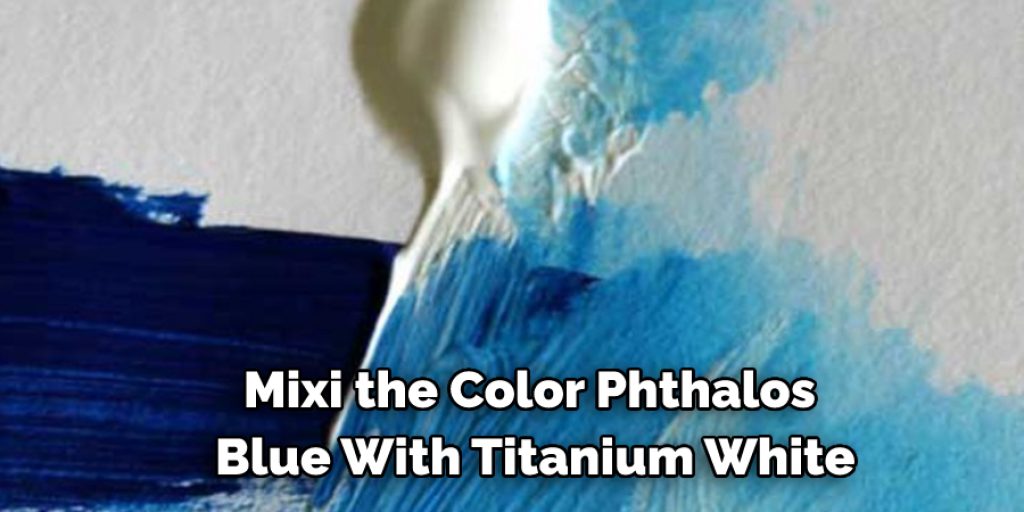How to Make Cerulean Blue
Blue is the color of the sky and a color to add when you are feeling the atmosphere. You can tell many poetic things about the color blue, and you will never get tired. Like there are so many beautiful shades of blue available. Each shade has its unique characteristics to add to the visible spectrum. One of the most favorite of many people is cerulean blue. And here we will teach you how to make cerulean blue if you do not have it in your hand.

What is Cerulean Blue?
The color cerulean blue is a very pretty color, but you might not know what it is. To learn how to make cerulean blue, you first need to understand what the color is.
The term cerulean blue was coined in 1590, so it is not that old yet. To describe the color cerulean blue, well, of course, it is a shade of blue. And the tone stays between the shade azure and sky blue. So, it is somewhat between the dark and light spectrum of blue shades.
The cerulean blue has a greenish hue to it, and for this reason, it is a great color to use when someone is painting the sky. The light touch of the cerulean brings out the perfect shade for the sky.
DIY: How to Make Cerulean Blue
There are several ways how to make cerulean blue. Before we start with the process, one thing that you need to remember is that cerulean blue is a very tough shade of blue to achieve by mixing other colors.
Therefore, whatever you mix, the chances are that you will not be able to find the right shade of cerulean blue until you have it as its own. Now that you know that let’s begin with the process.
Phthalos Blue+ Titanium White
The best result you can get of cerulean blue is mixing the color phthalic blue with the titanium white color. The phthalates blue is very dark and strong blue. At the same time, the titanium white is a grayish-white shade. But mixing them, you will turn the dark blue of the phthalic a little down and eventually achieve the cerulean blue color.

Prussian Blue+ White
The next combination that works the best is by using the Prussian blue color. The Prussian blue is another deep blue shade. Mixing the white with the Prussian blue will tone down the deepness and get close to the cerulean blue color.

Cobalt Blue + White
The last mixture is by using cobalt blue with white color. This will not give you the best result of cerulean blue. But if you have no choice, you can add this to your palette.
And these are the ways how to make cerulean blue.
Frequently Asked Questions
Is Cerulean Blue Turquoise?
Turquoise is a color that can vary from turquoise to cyan. It has an average of 8% chromium and 6% aluminum oxide in its composition. Cerulean blue is one of the colors of blue, which is mainly used for cerulean paint.
What Can I Use Instead of Ultramarine Blue?
Ultramarine blue is a costly pigment that any other color cannot replace. However, you can replace it with an alternative color like Prussian blue or cobalt blue.
Prussian Blue: This pigment comes from smalt, a deep-blue form of cobalt ore. It was developed in Germany in 1704 and was used to make ultramarine blue.
Cobalt Blue: Cobalt is a highly dense and dark pigment that has been mined since ancient times. It has been used for centuries as a substitute for ultramarine blue because it shares many of the same properties but costs less than its predecessor.
Is Phthalo Blue the Same as Cerulean Blue?
Phthalo blue is a color that was originally made by mixing cerulean and cobalt blue paints. It has been widely used in the paint industry since the early 20th century.
It can be considered as a combination of turquoise and navy blue colors.
Cerulean is also known as sky-blue or cornflower-blue, while phthalo is also known as brilliant green, Prussian green, or bluish ultramarine.
Final Thoughts
Even though achieving the cerulean blue color is a little tight, if you follow our steps on how to make cerulean blue, you will be able to get a closer result.
You may also read – How To Clean Oil Paint Palette




